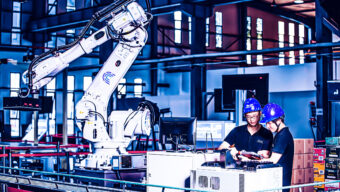The Challenge
Cymer faced a significant challenge in their reactive approach to part replacement
Cymer, a global leader in engineering, manufacturing, and maintaining lasers for chip production, faced a significant challenge in the reactive approach to part replacement. Responding reactively to part failures resulted in high costs, both in terms of machine downtime and customer dissatisfaction. The unplanned replacement of parts due to failure, rather than scheduled maintenance, incurred substantial expenses, often exceeding a million dollars per occurrence. Machine downtime not only translated into financial losses but also led to dissatisfied customers, further impacting the company’s bottom line.
The Action
Calligo sought to optimize the clients’ maintenance operations
In collaboration with Calligo, Cymer implemented a comprehensive solution to address the challenges of reactive maintenance and optimize their operations:
- Integrated Predictive Analytics: Calligo leveraged machine diagnostics to predict the lifespan of components using ARIMA Time-Series and Survival Curve Modeling. This allowed for accurate forecasts of potential failures.
- Demand Forecast Integration: Machine lifespan predictions were combined with customer demand forecasts using sophisticated Monte Carlo simulations, providing a robust basis for decision-making.
- Customized Predictive Models: Calligo incorporated customer-specific service and maintenance preferences into the predictive models. This customization enhanced the accuracy of predictions, aligning maintenance actions with individual customer needs.
- Proactive Service Planning: The integrated predictive models enabled Cymer to schedule machine services and maintenance before failures occurred. This proactive approach positioned the company to avoid machine downtime and enhance operational efficiency.
Data Science Methodology:
- ARIMA Time-Series: Utilized for accurate time-series analysis to predict component lifespan.
- Survival Curve Modeling: Implemented to estimate failure probabilities and optimize maintenance schedules.
- Monte Carlo Simulation: Used for scenario modeling and demand forecast integration.
- Markov Chain Modeling: Applied to analyze the transition of machine states over time.
- Tree-based ML Modeling: Utilized for creating predictive models based on decision trees.
The Impact


















 Back
Back